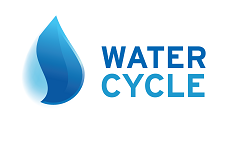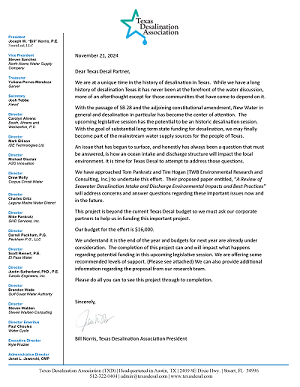A Review of Seawater Desalination Intake and Discharge Environmental Impacts and Best Practices
Authored by: Tim Hogan, MS, TWB Environmental Research and Consulting, Inc.; Eric Miller, MS, Miller Marine Sciences; Professor Amy Childress, MS, PhD, University of Southern California; and Tom Pankratz, Water Desalination Report
Scope of Work
Various papers have been published on individual aspects of seawater desalination intakes and discharges. Often, these are single-issue papers that suffer from a myopic review of the issues. There is an urgent need for a comprehensive review paper that provides the needed historical, regulatory, and environmental context of the issues to understand the types and magnitudes of impacts. In addition, there are many seawater desalination plants that are required to monitor only some aspects of their impact on the environment. Obviously, the degree of regulatory oversight and hot-button issues vary globally, but data from operational plants provides an empirical measure of environmental impacts.
To address these gaps, a comprehensive review paper would be prepared and submitted for publication in a peer-reviewed journal such as Desalination. The proposed paper would cover:
- Global perspective on intake and discharge design and regulation with a particular focus on information available from the Section 316(b) of the US EPA’s Clean Water Act *
- Impingement and entrainment (I&E): definitions, sampling and impact analysis methods
- Means and methods used to minimize and mitigate for I&E impacts
- State-of-the-art in intake design and intake screening technologies (e.g. velocity criteria, velocity caps, behavioral barriers)
- Summary of intake and discharge ecological/ecosystem-level studies *
- Review of intake biofouling control methods *
- Best practices for brine discharge
- The first-ever summary of Carlsbad brine discharge monitoring data
* addresses a specific issue or gap noted in the Nielsen paper
The overarching goal of the proposed paper is to present an objective review of existing information on seawater intake and brine discharges. It will comprehensively review and summarize the information available, including the means to measure, minimize, and mitigate for intake and discharge impacts. The literature to be reviewed will include both peer-reviewed and “gray” literature (e.g., industry reports). Where available, original empirical data will be relied on (e.g., Carlsbad discharge monitoring) to support science-based conclusions about environmental impacts. Finally, the paper will address various misconceptions and fallacies identified in the literature.
Texas Desal Needs Your Support
This project is beyond the current Texas Desal budget so we must ask our
Bill Norris, Texas Desalination Association President
corporate partners to help us in funding this important project.
Our budget for the effort is $16,000.
- Primary Sponsor…$5,000 and Above
Premier Company Logo Placement with Special Recognition as a ‘Top Financial Contributor’ - Major Sponsor…$3,000 – $4,999
Individual Name or Company Logo Placement - Supporting Sponsor…$1,000 – $2,999
Individual Name or Company Logo Placement - Friend of Research…$250 – $999
Individual or Company Name Listed
Thank You Sponsors!
Supporting Sponsor

Friend of Research
- Steven Walden Consulting
